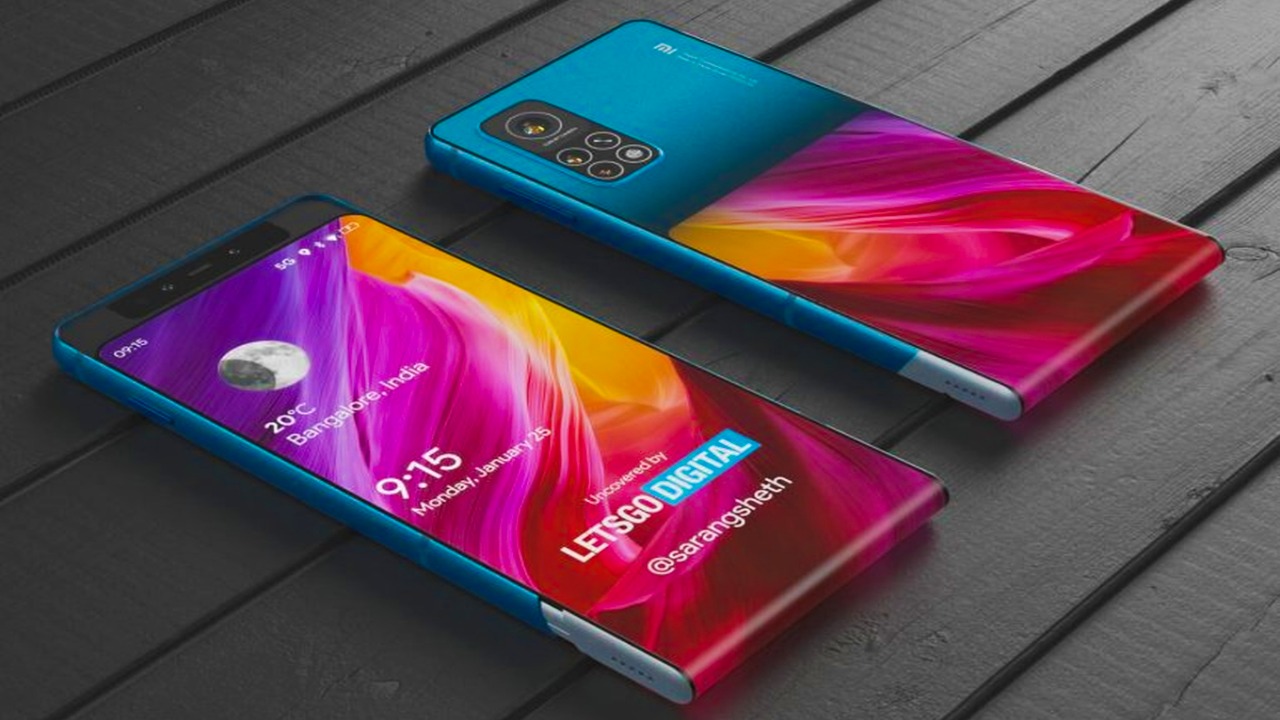Xiaomi's ambitious rollable phone project feels like the Samsung Galaxy Fold all over again
New rollable 3-in-1 looks to improve on Xiaomi Mi Mix 3, but opens itself up to functionality issues


Mobile phones are constantly shifting, changing, and morphing. New concepts point to extravagant designs that can contort a device into many different directions. Now, Xiaomi has reared its head with a new rollable screen design that looks set to boost the capacity of the screen by stretching it around the phone.
It could be a new take on the Xiaomi Mi Mix 3, which was a steadfast embodiment of Xiaomi's design abilities, although the sliding design didn't suit everyone. As display design grows into new takes on old designs, it's worthwhile examining the necessity of such innovations, and whether it's evolution for the sake of evolution.
- Breaking: Twitter's community driven fact-checking pilot is yet another misstep for the platform
- Apple says to keep iPhone 12 away from pacemakers…just in case
- Xbox Live Gold vs. Xbox Game Pass Ultimate: which one is right for you?

Smartphone design is always stretching the limits of what's conceptually possible; to this point, Xiaomi's patent for its new rollable screen is beautifully ambitious, but at what cost?
Published in the latter half of October 2020 by the United States Patent Application Publication, it pertains to an innovative new design that boasts a vertically sliding display. The patent points to a body that uses a slide rail: there’s a first surface, a second surface opposite, and a side surface. These all morph into a 3-in-1 flexible display that flits between a retracted state, and a slide-out state.
If that’s one-surface-too-far for you to imagine, then the render from Yanko illustrates how this may operate (via LetsGoDigital). In theory, it looks like a tantalizing proposition: wholly flexible, offering more screen real estate, while lending itself to versatility. But, hold your horses: all may not be as it seems, so we’ve picked through a few of the purported design features to explore their practicality.
Roll-up display
The front of the phone can be all-screen; it slides to wrap around the back of the phone, too. With the screen around the back, it just about leaves room for the rear camera; furthermore, the slide rail means it can maneuver back and forth over the selfie camera, covering it completely if it chooses. This gives the impression of a wholly bezel-less handset. What’s more is that the patent suggests that this movement, which affords two centimeters of maneuverability down from the front, means the device gets longer at the bottom.
What the patent can’t show is how robust the screen is with everyday use. A good measure of this can be the creasing of the screen as it rolls and unrolls; and, to the credit of the renders, the operation looks sleekly built. But these screens are only as good as the bracket they’re mounted on; Xiaomi’s patent shows the screen as using magnets, letting the device snap to an open or closed position. We must only cast our minds back to the original Samsung Galaxy Fold: T3 admired the ambition, but its execution lacked finesse, not to mention the bezels that looked ugly on the perimeter.
Get all the latest news, reviews, deals and buying guides on gorgeous tech, home and active products from the T3 experts
The Xiaomi is much like the Oppo X 2021 that boasts charming, rollable looks. And, in much the same way, there’s cause for concern around screen bulging, as the screen wraps around the body. It’s a design quirk that all manufactures of rollable displays need to contend with when approaching the longevity of these screens.
T3 covered Oppo’s suggested take on the next-gen display; similarly, it's touted to slide back and forth to accommodate the expanding display much like Xiaomi's. Aside from all the bells and whistles of rollable tech, maintaining the integrity of these displays will be the key challenge as these phones pivot from exhibit to existence. The Xiaomi concept will be no different.
Voice commands for slide display
T3 has warmly reported on the Samsung Galaxy Scroll that looks to leave its own imprint on the rollable game; its model could even opt to include an S-Pen to use with the rollable screen, as T3 reported back in December. This is a potentially savvy design choice, giving it more usability and more manual command over the display. In this sense, a stylus adds another vector of control over the screen.
Meanwhile, Xiaomi’s patent looks to go beyond just finger controls, and outlines voice-operated commands to move the screen into different positions. It sounds like a spectacular addition to the phone’s functionality – like Samsung, a potential new vector of control to use with your rollable gizmo.
However, voice commands are shaky at the best of times. We’ve all experienced the incorrect interpretation of these commands by our helpless device. Is it such a good idea to let these commands natively control our rollable screens, especially something as important as your screen’s basic functionality?
Although the jury's still out, it seems preferable to us have something like a stylus as an optional tool of control, over the more unstable voice features that could be baked-in to the Xiaomi device, and are merited as a cornerstone of how the device can function.
Form Factor
And not to level too much negativity towards Xiaomi, but other devices might just be set to do rollable displays better. You certainly can't overlook the teasing of LG's rollable that T3 covered from CES 2021.
A brief glimpse of the supposed LG device suggests that it'll harness rollable technology to significantly boost its size from the sides. It builds on a patent filed last year and, if speculation holds to be true, its screen will easily eclipse Xiaomi's to offer two sets of sizes, which it can oscillate between.
The rollable form looks more at home on a bigger screen, where the user experience looks less fiddly, and they appear less cumbersome in the hand by being more balanced. It should be noted that the Xiaomi patent also features a design that expands sideways, but there isn't as much detail around this.
If rollable smartphones are far too gimmicky for your liking, then you can always check out our best phones guide. In this guide, we've stuck to the basics to deliver you models that offer the best bang for your buck, across a highly saturated marketplace.
Rollable phones will raise the bar in terms of what you can spend on handsets. Smartphones are by no means chump change already; as such, we can only speculate on the pricing. With foldable phones, Samsung's Galaxy Z Fold 3 is expected to start at $1,999 / £1,799 / AU$2,999, based on estimates from its predecessor; therefore, rollable devices – offering the latest tech to boot – will likely come in with an even heavier price tag.
Either way, the Xiaomi patent shows phone developers are continuing to embrace new innovations, despite Covid-19 stunting growth in many tech sectors. Screen blueprints are remarkable on paper, but more often than not, it can land developers in hot water, as they trade basic functionality for lofty innovations.
With that said, it's advisable to take Xiaomi's design with a pinch of salt; be mindful of the potential drawbacks of these devices that boast bendable displays; more, consider the robustness of such new designs before splashing the cash on something that doesn't offer basic longevity.
Source: Android Authority

Luke is a former news writer at T3 who covered all things tech at T3. Disc golf enthusiast, keen jogger, and fond of all things outdoors (when not indoors messing around with gadgets), Luke wrote about a wide-array of subjects for T3.com, including Android Auto, WhatsApp, Sky, Virgin Media, Amazon Kindle, Windows 11, Chromebooks, iPhones and much more, too.